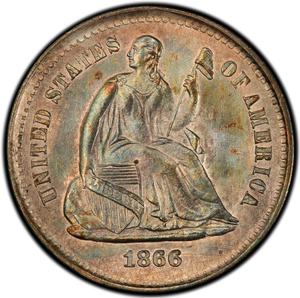Information about effigy: Liberty, Seated
Liberty, Seated
Liberty, Seated - Example/s on coins

Seated Liberty with stars United States / Half Dime 1866 Seated Liberty For most of the time while the image was used, Miss Liberty was shown surrounded by the legend UNITED STATES OF AMERICA. |

Seated Liberty with stars United States / Half Dime 1857 Seated Liberty Between 1838 and 1868, Miss Liberty was shown surrounded by thirteen stars - symbols of the first 13 States in the Union. |

Seated Liberty with stars United States / One Dime 1837 Seated Liberty In earlier days, Miss Liberty was shown with only the date below and no stars. |
Liberty, Seated - showing 100 of 153 coins (Page 1 of 2)
|
Liberty, Seated: Details
| Year | 1836 |
|---|
Is a sub-type of...
| Image | Details |
|---|---|
|
Liberty (United States) From 1793 |


